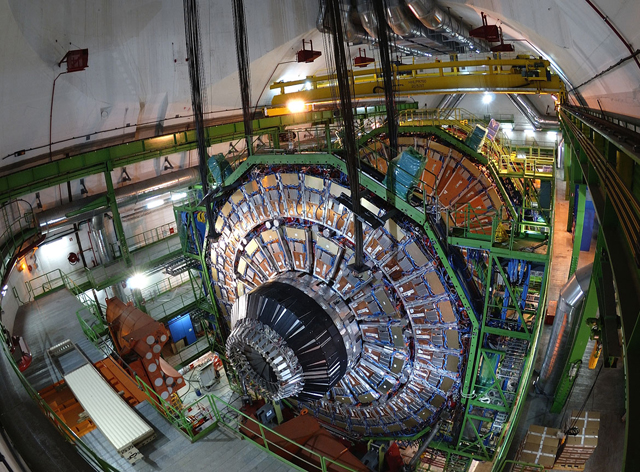- 3739 - ATOM COLLIDER - understanding what we’re made of? The “Perlmutter supercomputer” is named for the Berkeley Lab cosmologist and Nobel laureate Saul Perlmutter. This supercomputer allowed scientists to use 128 computers simultaneously. Scientists were able to run all the steps of the analysis, from data processing to the derivation of the results, in less than a week instead of months.
-
-------------------- CERN - atom collider
------- 3739 - ATOM COLLIDER - understanding what we’re made of?
- The “DESY” national research center in Germany has been developing new algorithms to accelerate the analysis of data collected decades ago by “HERA‘, the world’s most powerful electron-proton collider that ran from 1992 to 2007.
-
- “HERA” is a ring 4 miles in circumference. It worked like a giant microscope that accelerated both electrons and protons to nearly the speed of light. The particles were collided head-on, which could scatter a proton into its constituent parts: quarks and gluons.
-
- HERA took measurements of the particle debris cascading from these electron-proton collisions, what physicists call “deep inelastic scattering,” through sophisticated cameras called particle detectors.
-
- The “H1 particle detector” stopped collecting data in 2007. Today, 2022, scientists are still analyzing the data and publishing results in scientific journals. It can take a year or more when using conventional computational techniques to measure quantities related to proton structure and the strong force, such as how many particles are produced when a proton collides with an electron.
-
- The HERA electron-proton collider accelerated both electrons and protons to nearly the speed of light. The particles were collided head-on, which could scatter a proton into its constituent parts: quarks and gluons.
-
- And if a researcher wants to examine a different quantity, such as how fast particles are flying in the wake of a quark-gluon jet stream, they would have to start the long computational process all over again, and wait yet another year.
-
- “OmniFold “is a machine learning tool that uses several neural networks at once to combine computer simulations with data. A “neural network” is a machine learning tool that processes complex data that is impossible for scientists to do manually.
-
- Scientists today have a renewed interest in HERA’s particle experiments, as they hope to use the data and more precise computer simulations informed by tools like this powerful and versatile new machine capable of colliding high-energy beams of polarized electrons with a wide range of ions across many energies, including polarized protons and some polarized ions.
-
- Scientists hope to answer questions that still remain about the “strong force“. Even though this work might not lead to practical applications in the near term, understanding the building blocks of nature is the goal. These are steps to understanding at the most basic level what everything is made of. Even you and me.
-
- November 12, 2022 ATOM COLLIDER - understanding what we’re made of? 3737
----------------------------------------------------------------------------------------
----- Comments appreciated and Pass it on to whomever is interested. ---
--- Some reviews are at: -------------- http://jdetrick.blogspot.com -----
-- email feedback, corrections, request for copies or Index of all reviews
--- to: ------ jamesdetrick@comcast.net ------ “Jim Detrick” -----------
--------------------- --- Saturday, November 12, 2022 ---------------------------

No comments:
Post a Comment